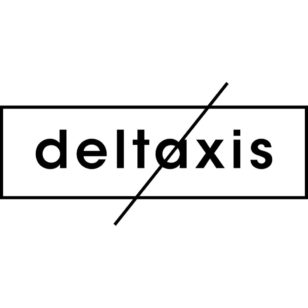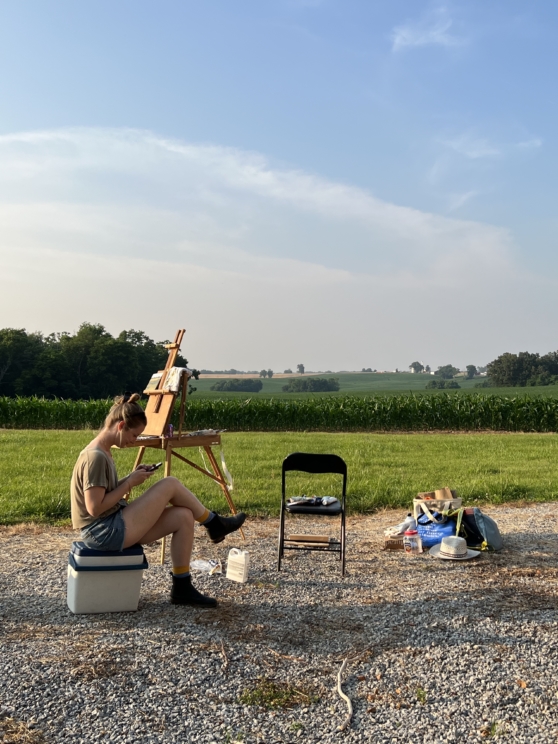Rachel Bubis: You use a “formalized system of knot creation” in the geometric shapes and patterns of your work. Can you elaborate on what you mean by “knots,” and how you developed this system? Where did your interest with knots begin? Adam Rowe: Technically I should probably be using the term ‘knot diagrams’ since, generally speaking, a knot is a closed, non-self-intersecting curve embedded in three-dimensional space. That basically means that if you tie any knot you might have heard of by name (...
Read more >THE FOCUS
Rachel Bubis: You describe your inspiration coming from “mundane, everyday objects and humorous, uncanny scenes that you might encounter at home or on a walk.” Could you tell me a little more about your process – what happens from the time you encounter an interesting object or scene to a finished painting? Caitlin Blomstrom: Like a lot of people, I use my phone as a tool to document the things around me. While walking, I take quick pictures of things that I want...
Read more >Wesley Roden: The scale of your work coupled with the attention to detail allows viewers to either look closely or from a distance. How do you anticipate your works to be viewed and how do you create them with this dynamic in mind? Do you expect the works to be viewed personally, impersonally, or somewhere in between? Bethany Carlson Coffin: I definitely put a lot of emphasis on the experience and the encounter. That dictates, to a large degree, the...
Read more >Rachel Bubis: Your recent exhibition at the Parthenon, The Odyssey: A Retelling (2022), takes inspiration from Emily Wilson’s 2017 translation of Homer's epic poem, and highlights the “hospitality of the overlooked identities that made Odysseus’ long journey home possible.” Were you a fan of Homer before this exhibition? Lisa Bachman Jones: I was not a fan before, but I was interested in how Homer’s work was a foundation for Greek education. What propelled selecting Homer and The Odyssey for this project wa...
Read more >Rachel Bubis: You mention that your prints "explore our relationship with other living creatures as we become further removed from the natural world.” How did your passion for animals and the environment first begin? Ashton Ludden: I think we all first have that fascination with animals and the wild world when we are children. For me, I’m sure it began in my young childhood, particularly when I was between 2 and 8 when I lived out in the countryside of Western Miss...
Read more >Rachel Bubis: You incorporate imagery of physical landscapes such as rock formations and fields of flowers as a way to portray the different layers and roles of your life. Do you spend a lot of time outdoors? If so, do you ever consciously go out into nature for inspiration for your work? Do you do any sketches? Are there any particular spots in TN you derive inspiration from? Jessie Van der Laan: The imagery I use from nature I usually...
Read more >Rachel Bubis: You describe yourself as a queer artist and your work as exclusively feminine. "I equate the femininity in my work to be two fold. The first is a force—what would an entirely unbridled experience of our world be if it was ONLY feminine? It’s terrifying and wonderful." What’s your process in thinking about such scenarios or worlds, and coming to create the final work? I know you're a writer as well and some of your...
Read more >Rachel Bubis: You describe your work as having “a strong connection to the bold color fields found in 17th century Japanese folding screens," and "the fluid brushwork of the 19th century ink painter Uragami Gyokudō.” What draws you to Japanese art and culture? Jeffrey Morton: I lived and worked in Sendai, Japan (about 250 miles northeast of Tokyo) during my 20s; it was in the mid-1980’s and I taught English as a Second Language (ESL) to college students and businesspeople. Even wi...
Read more >







